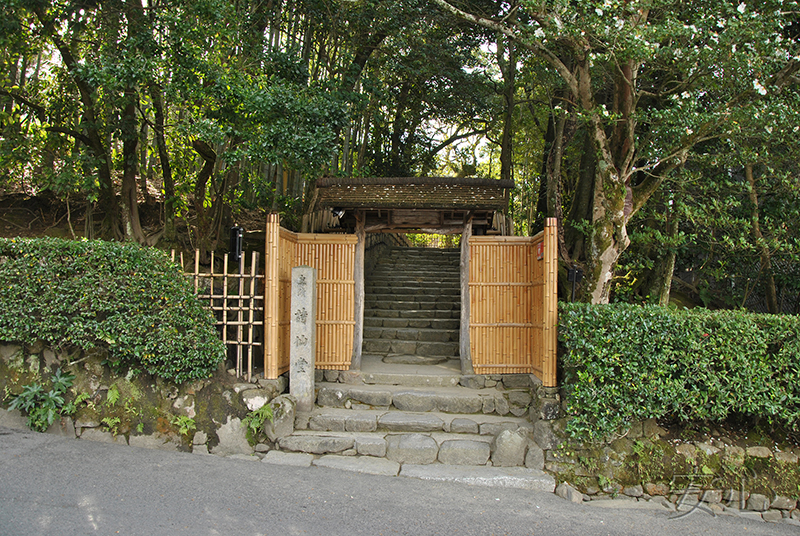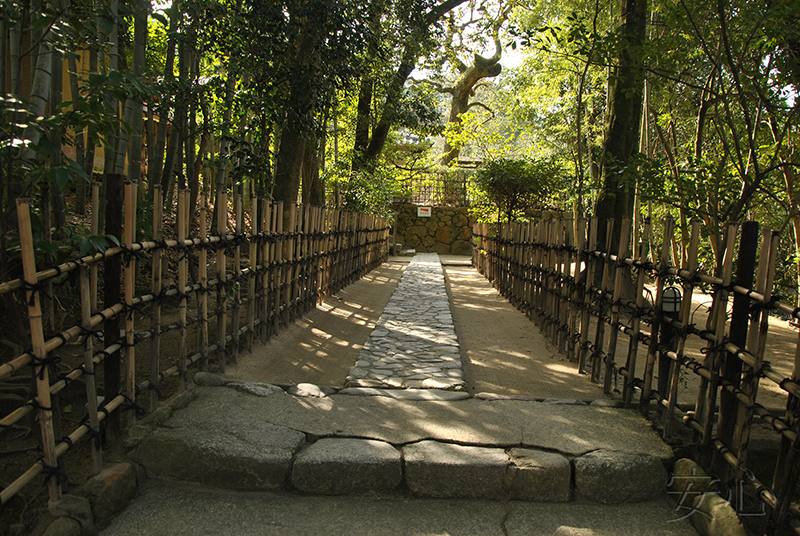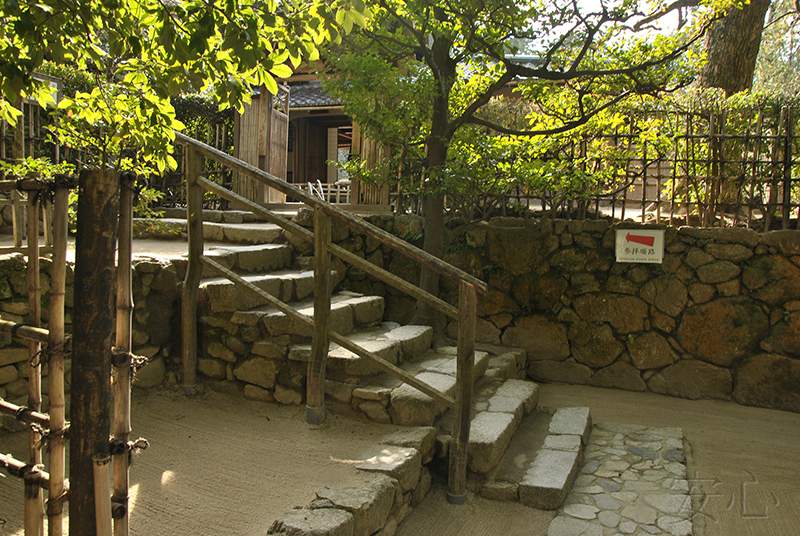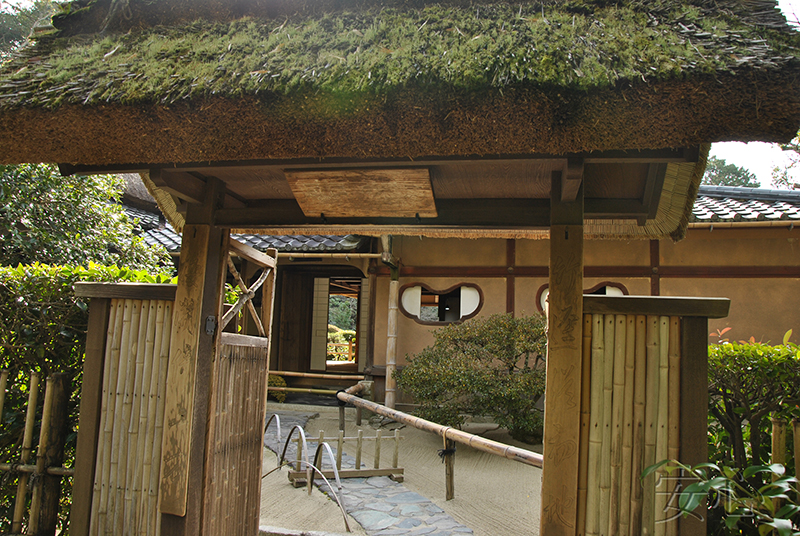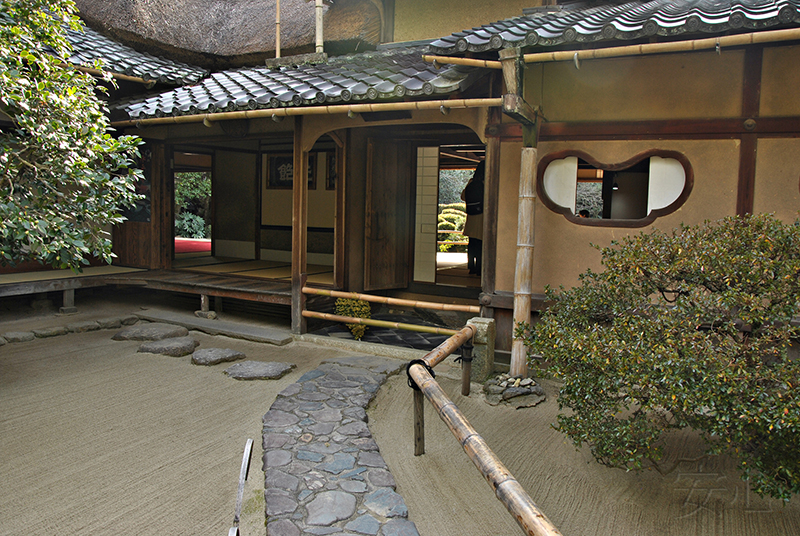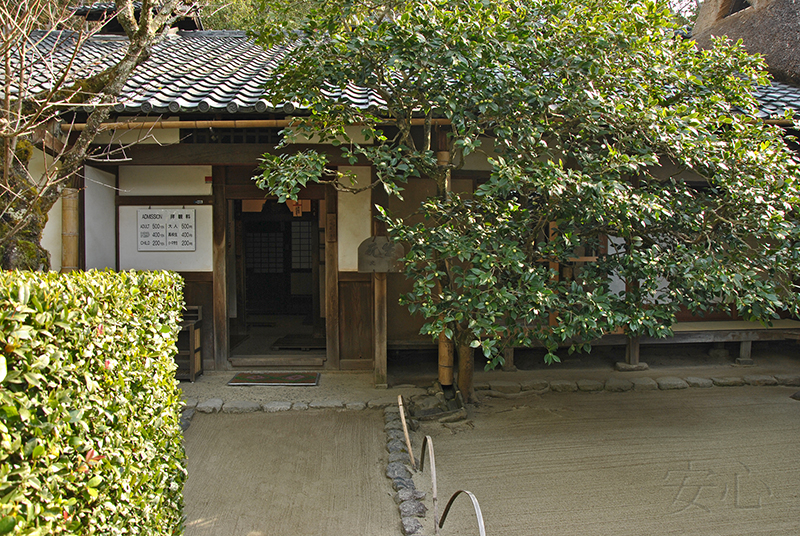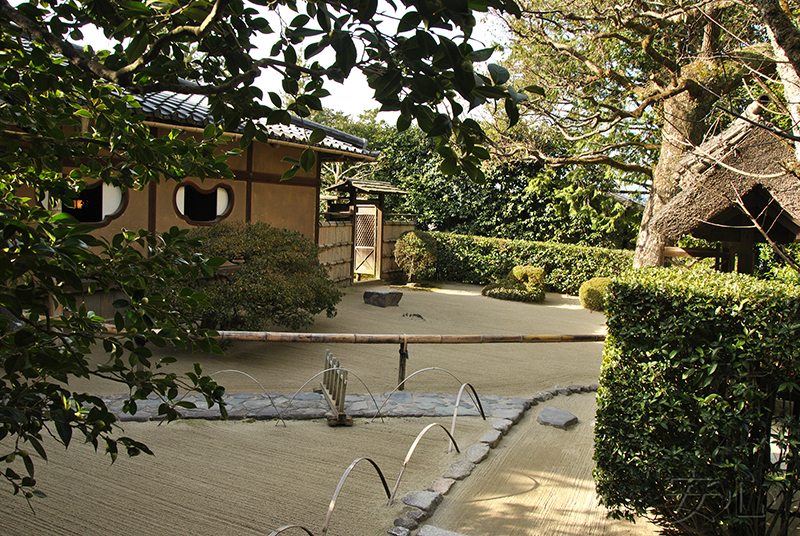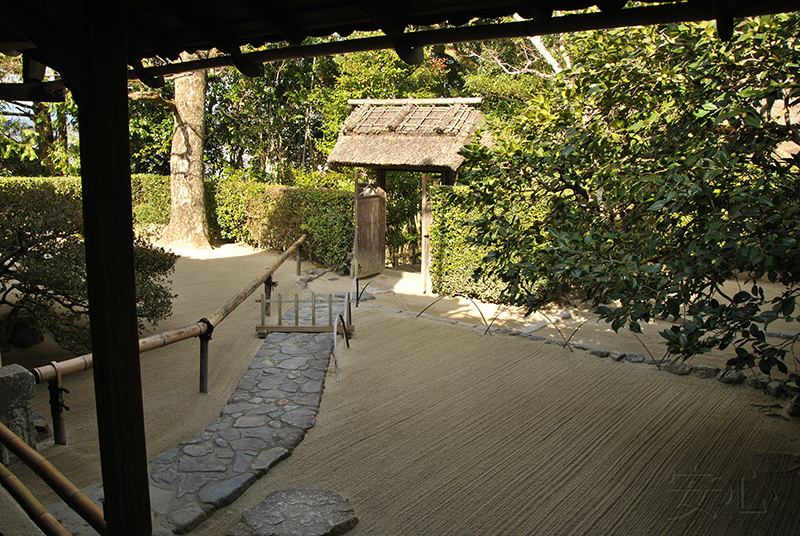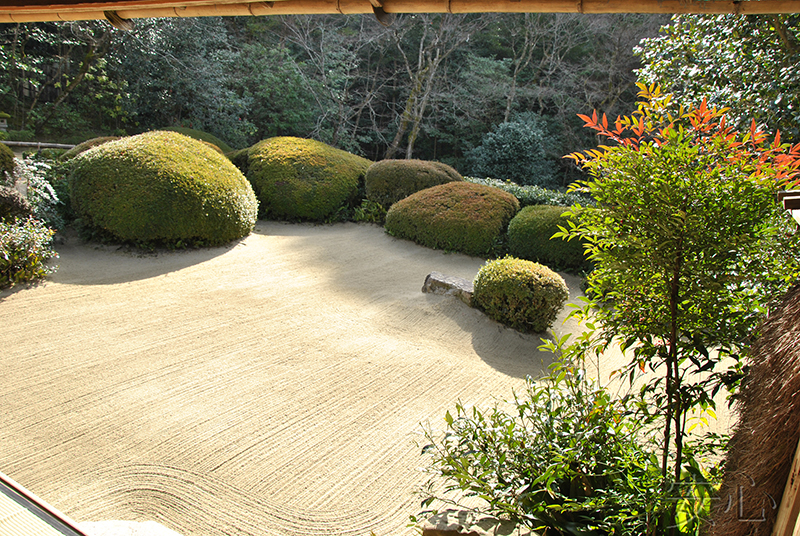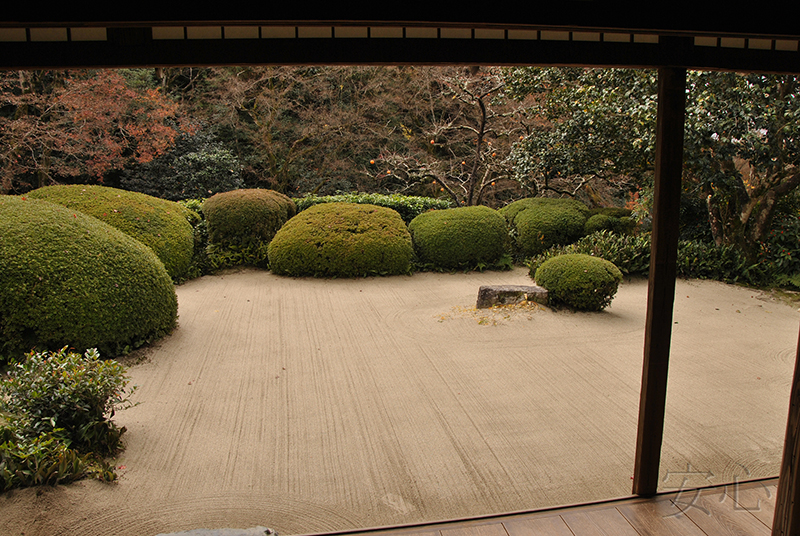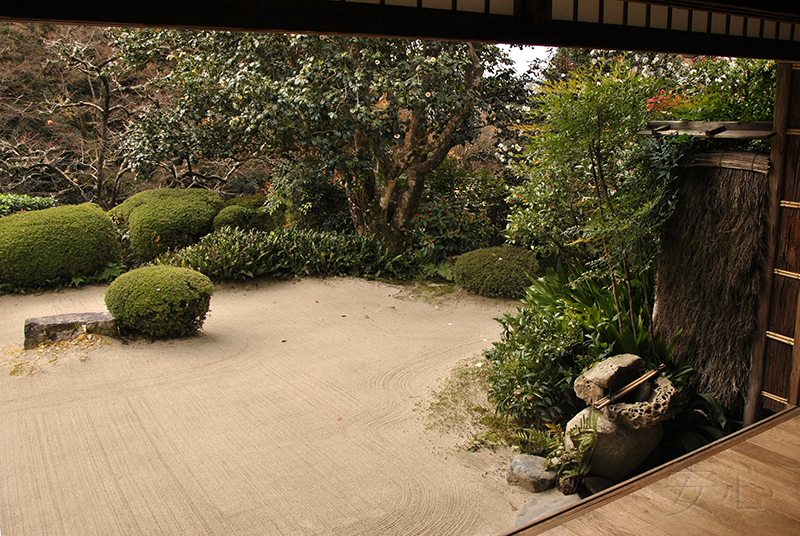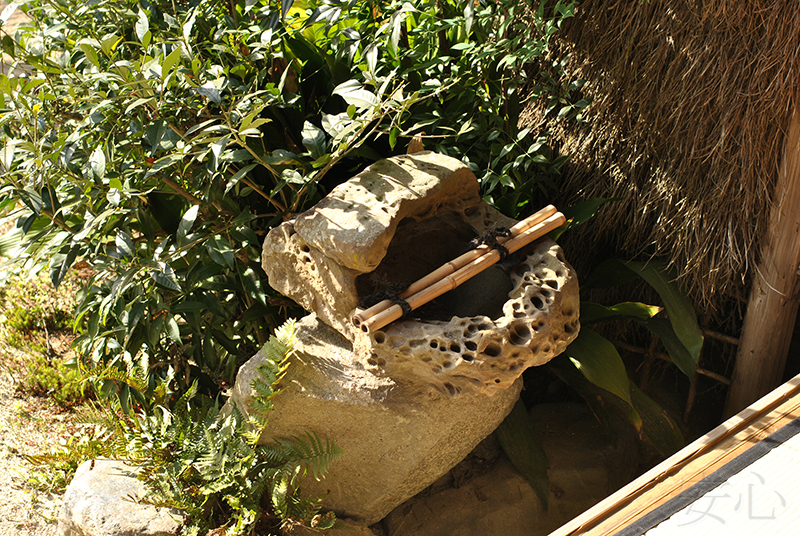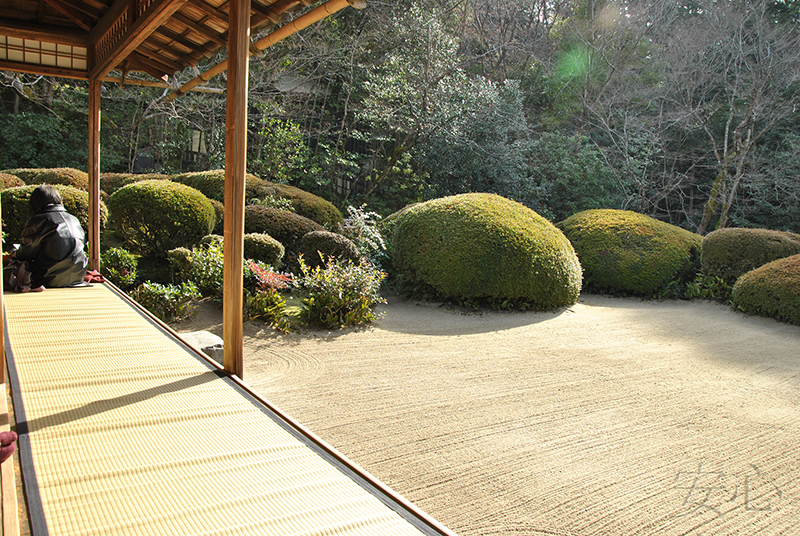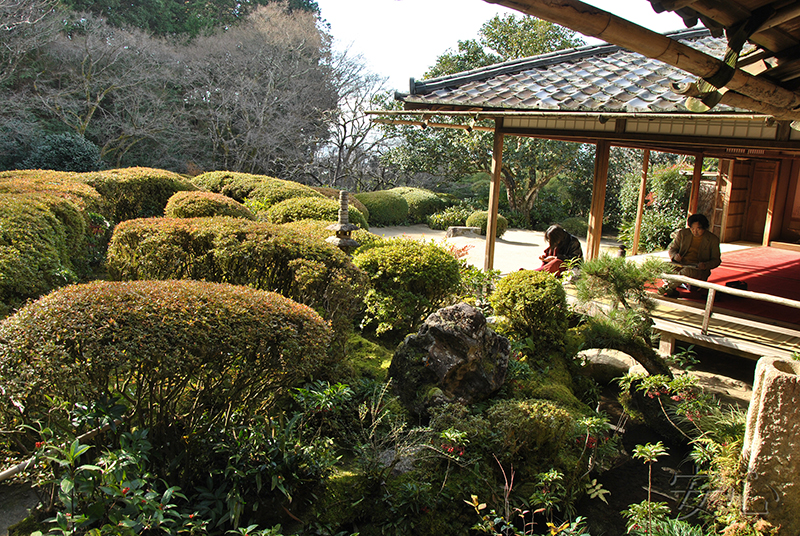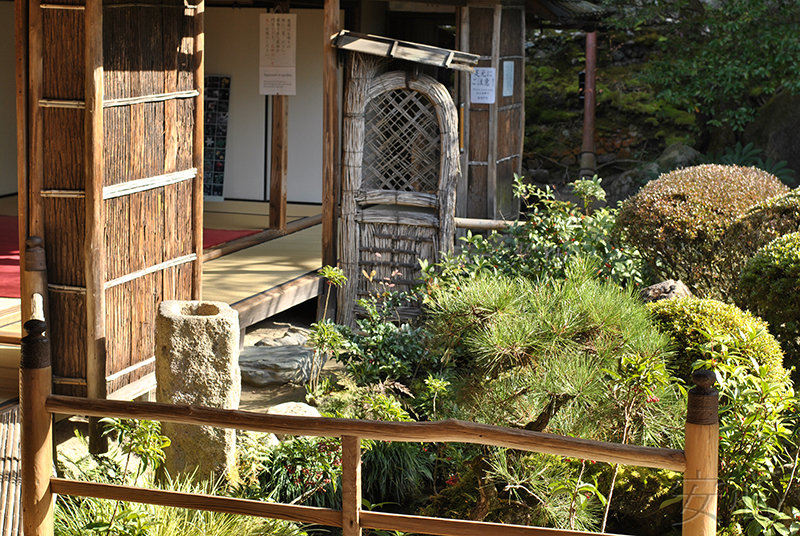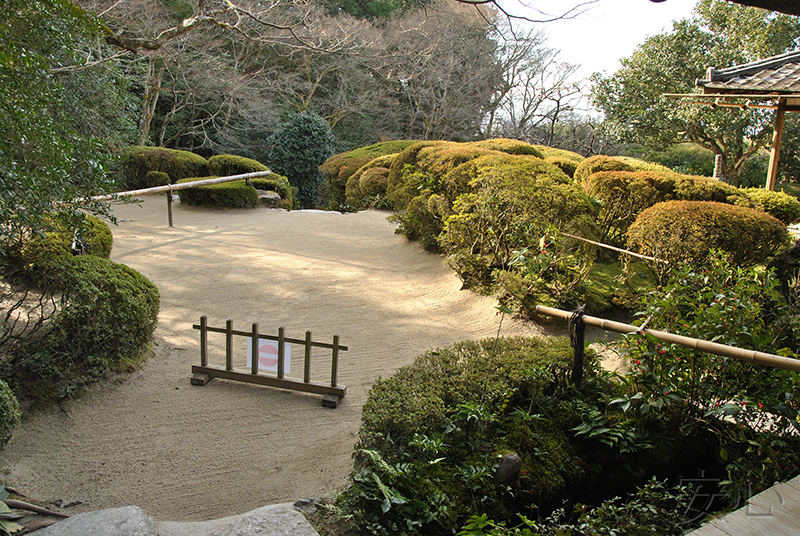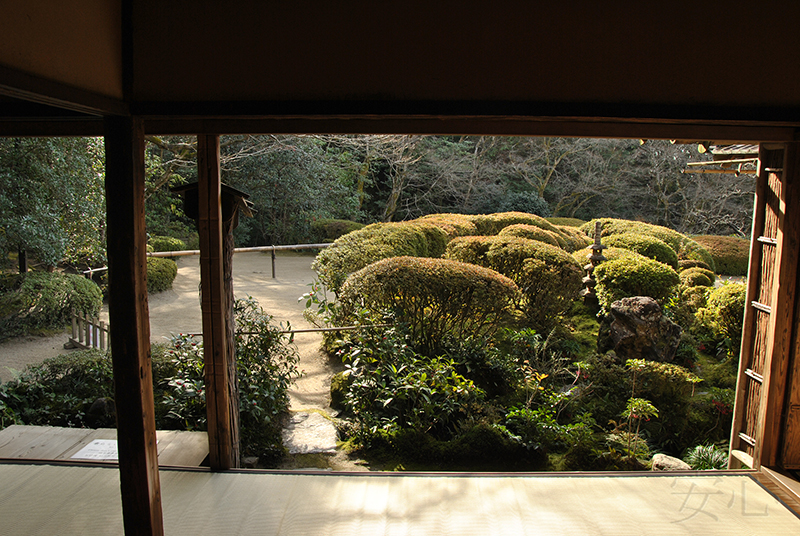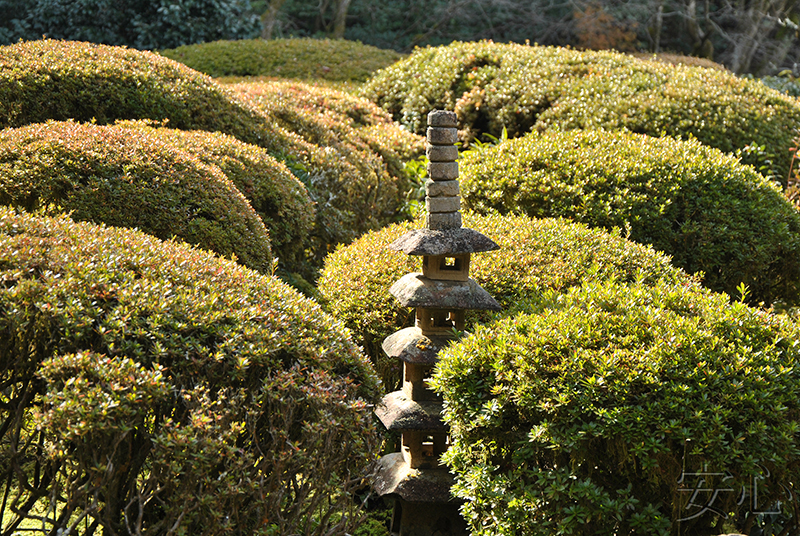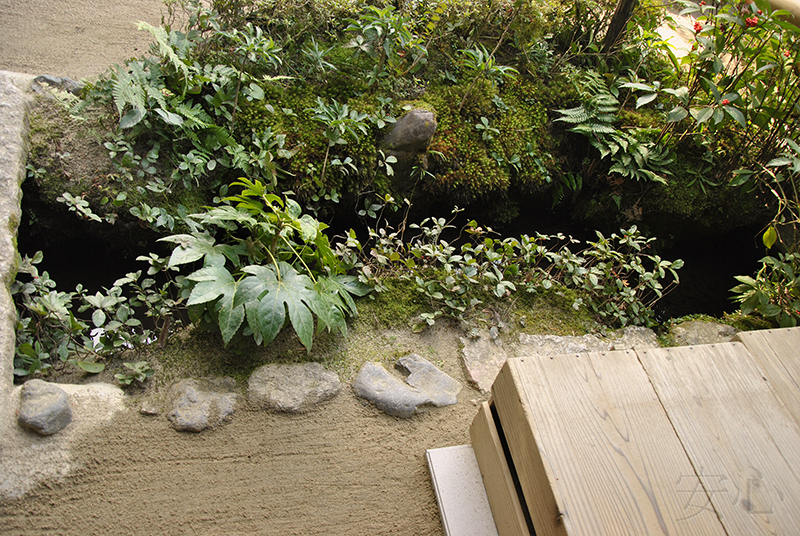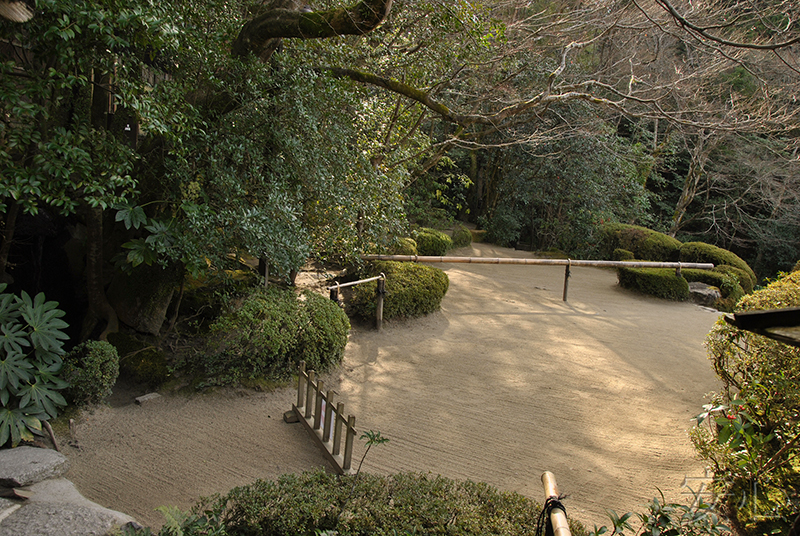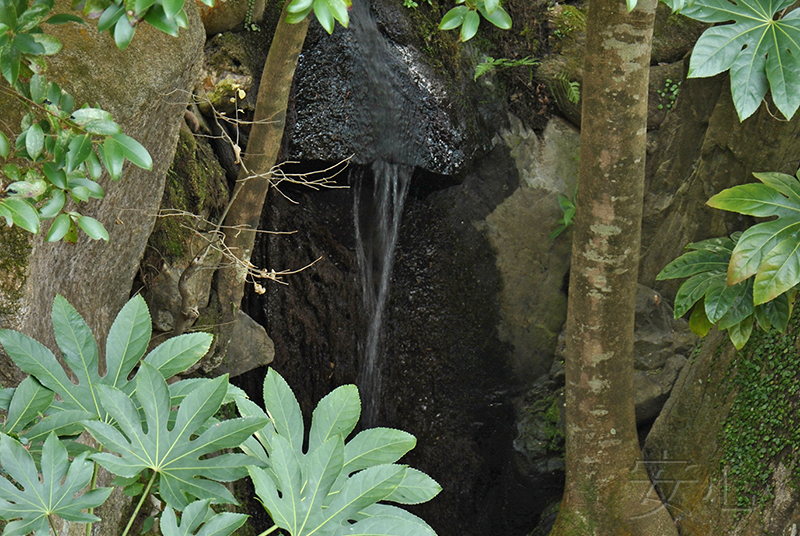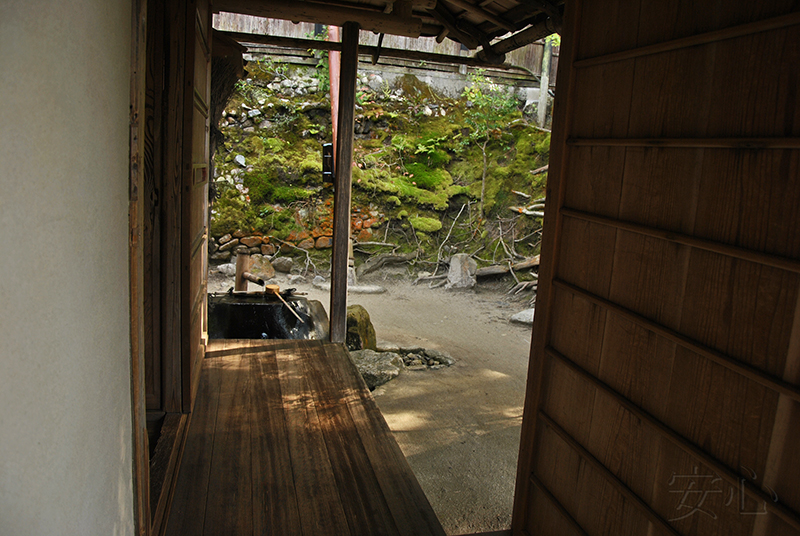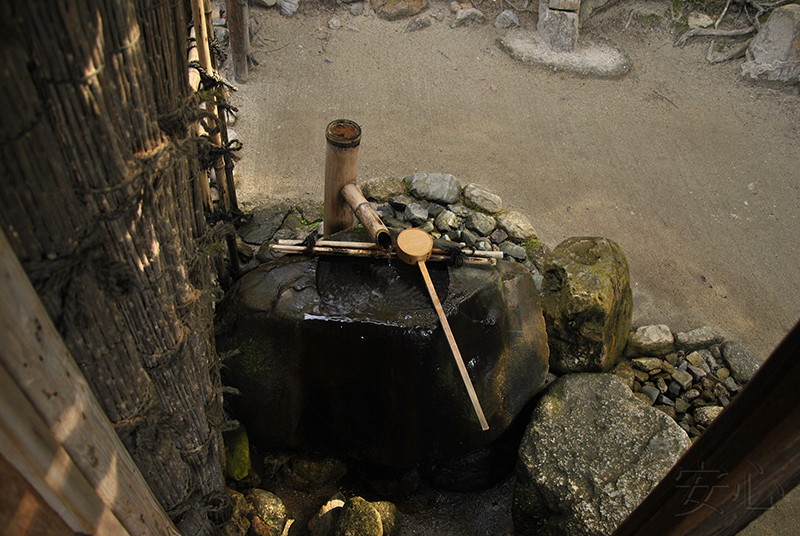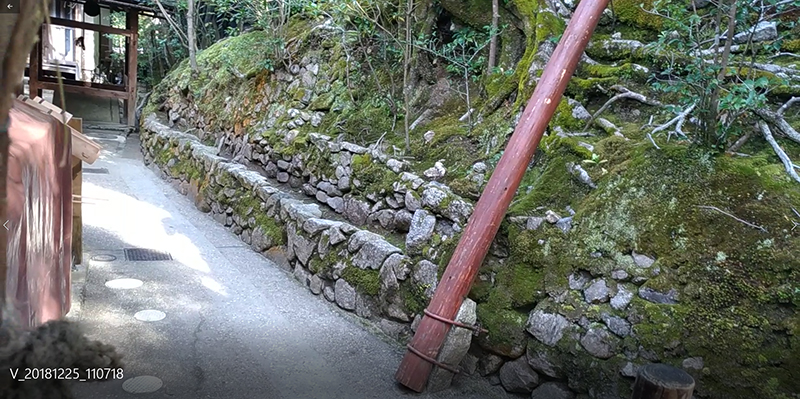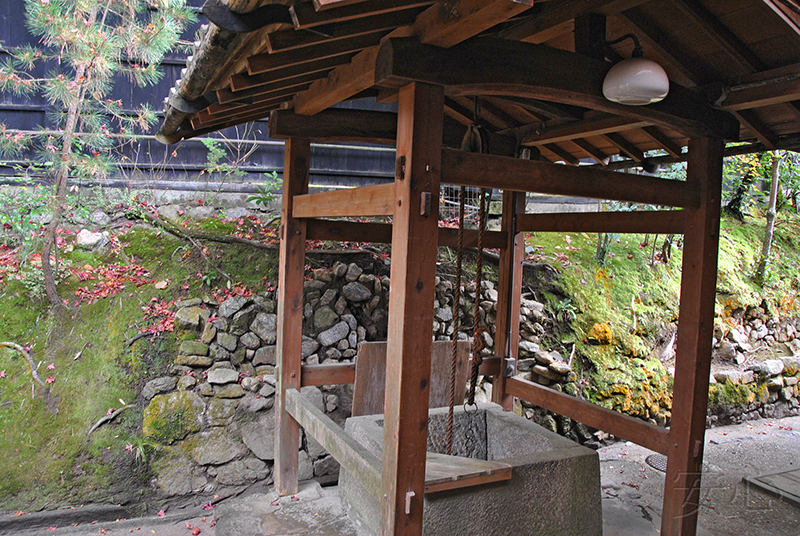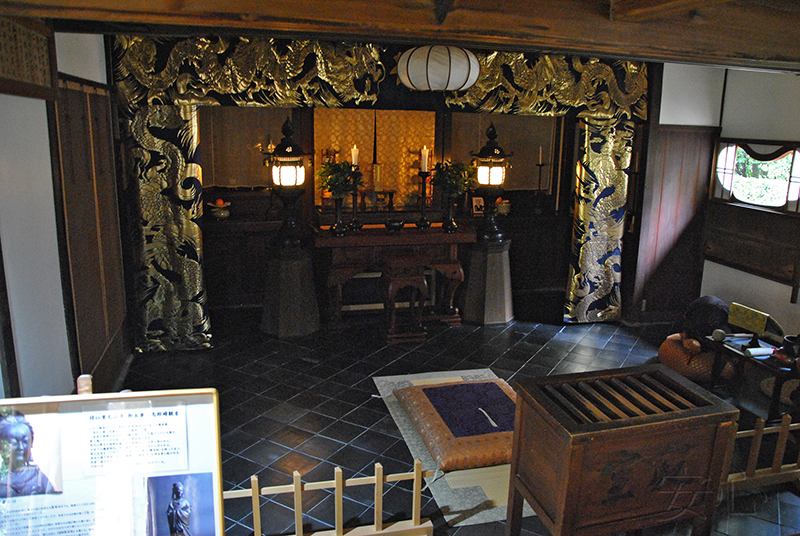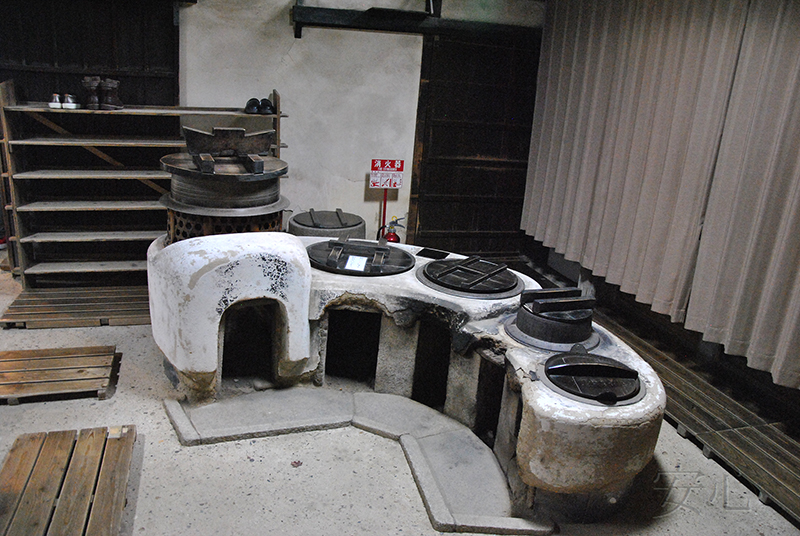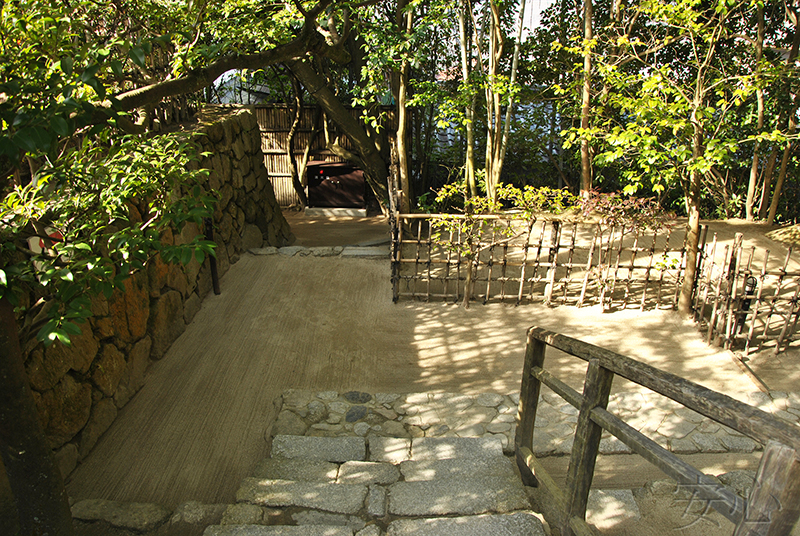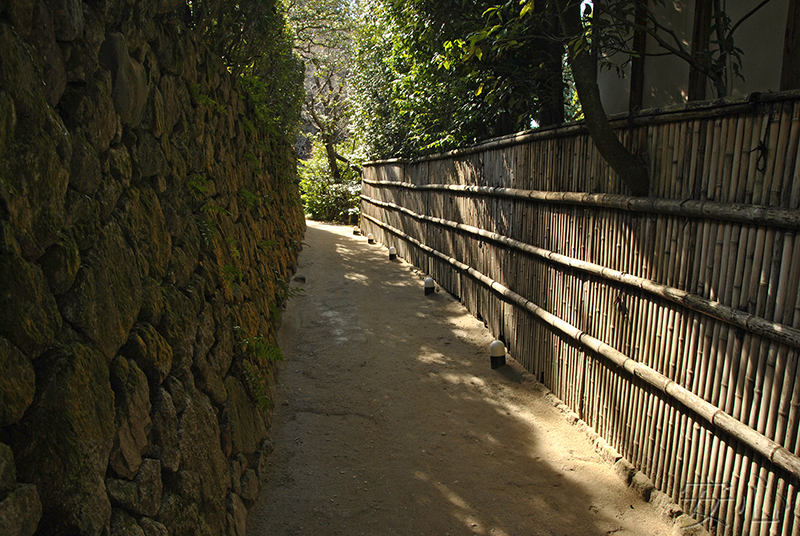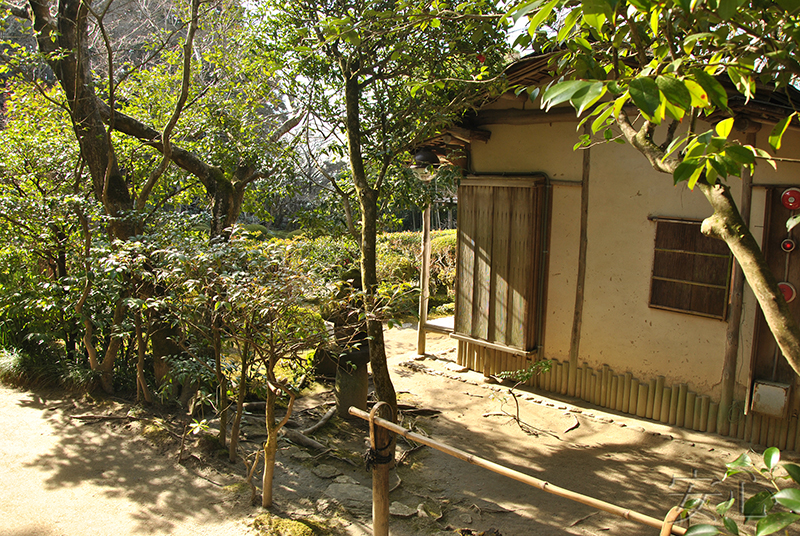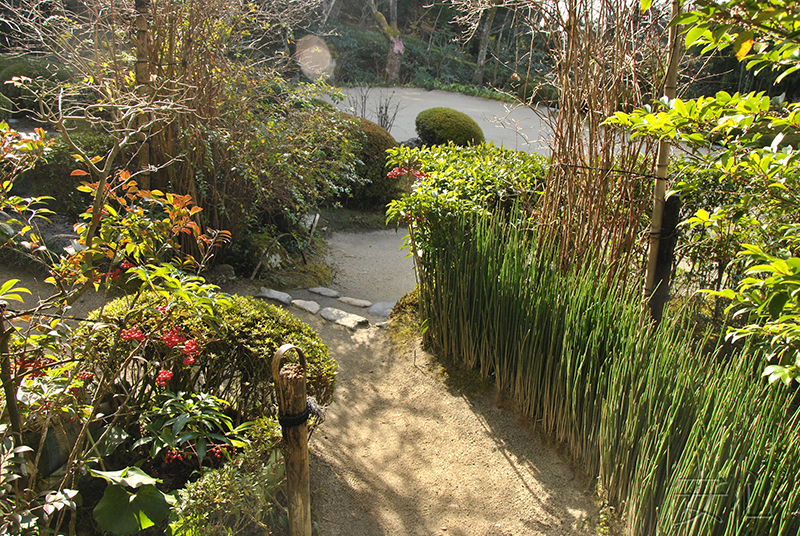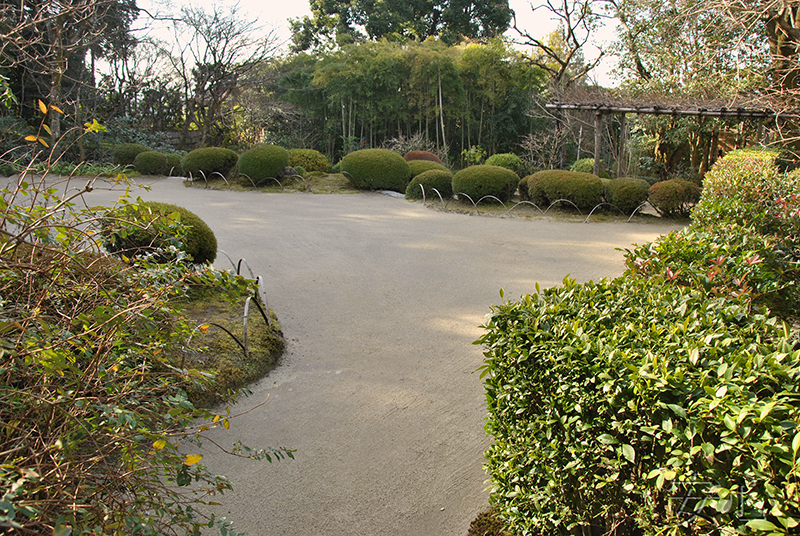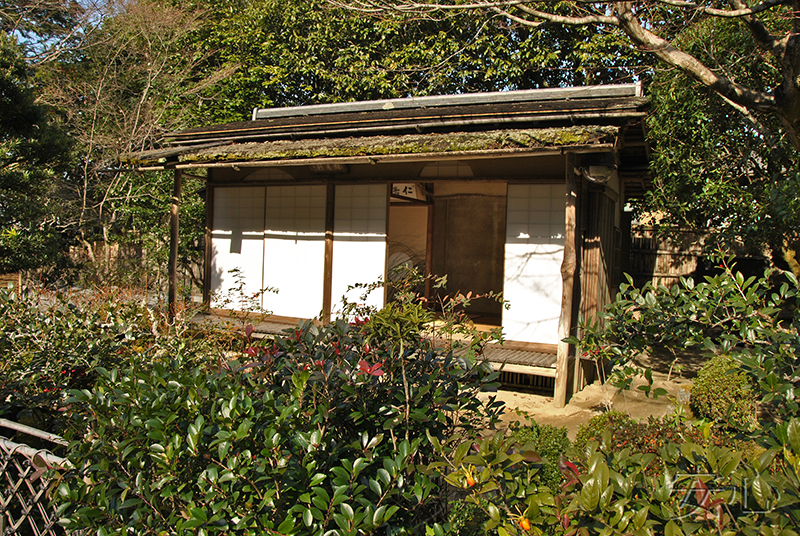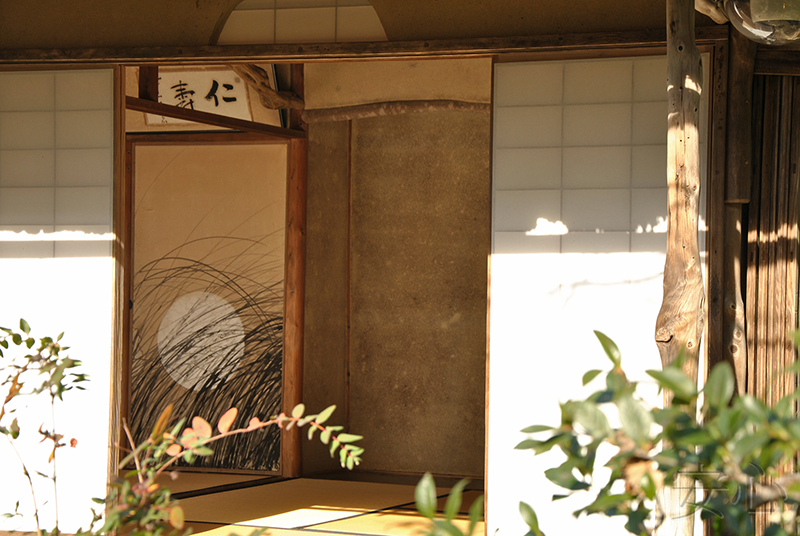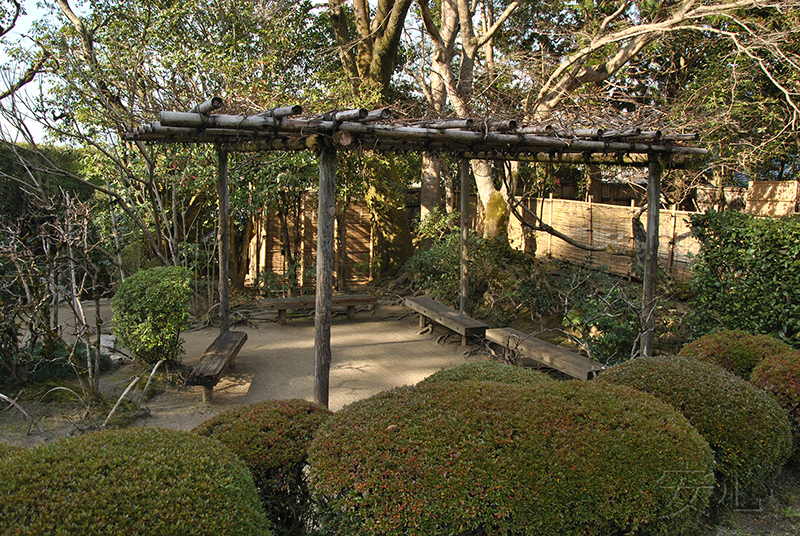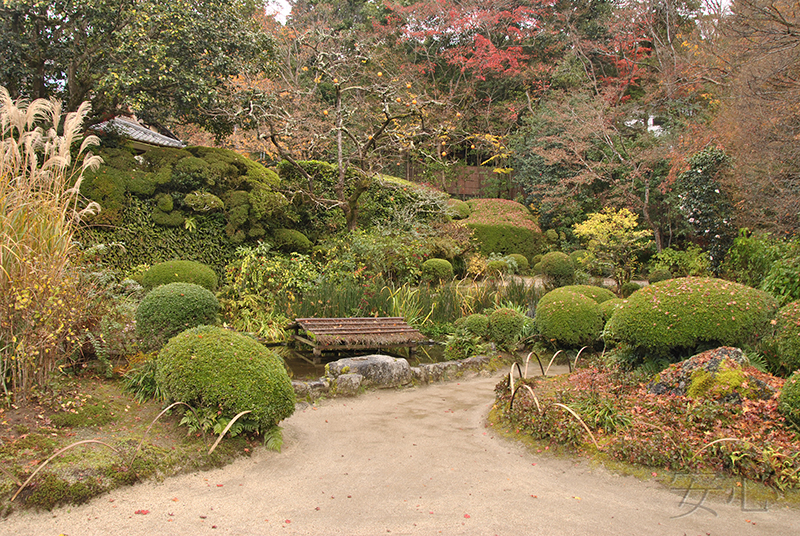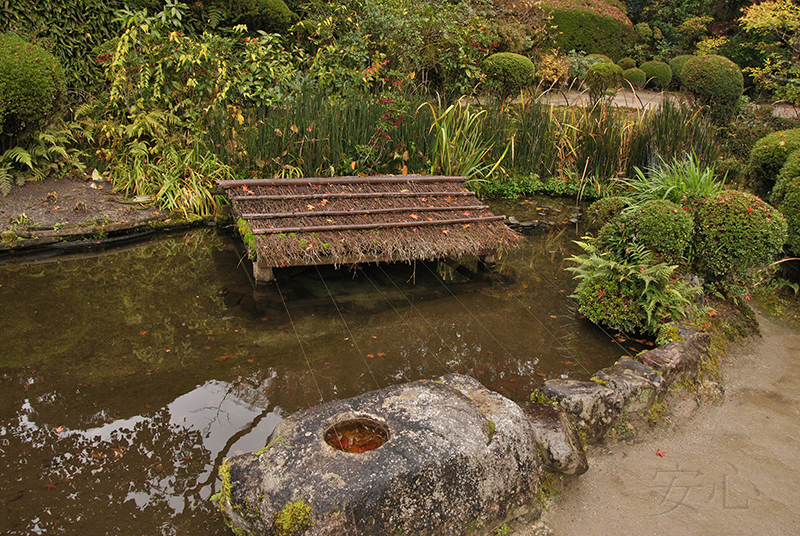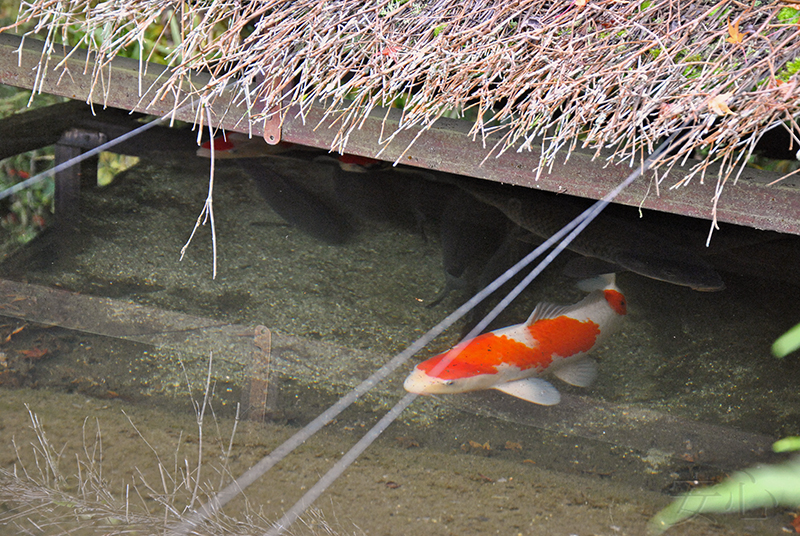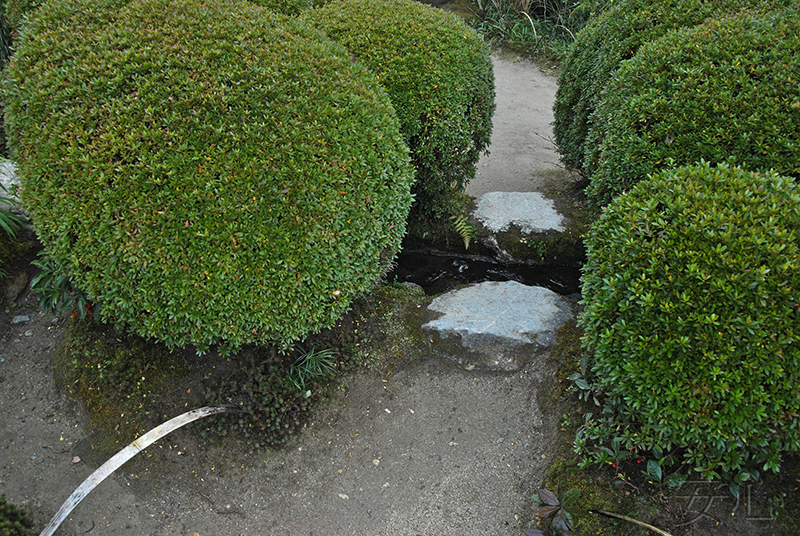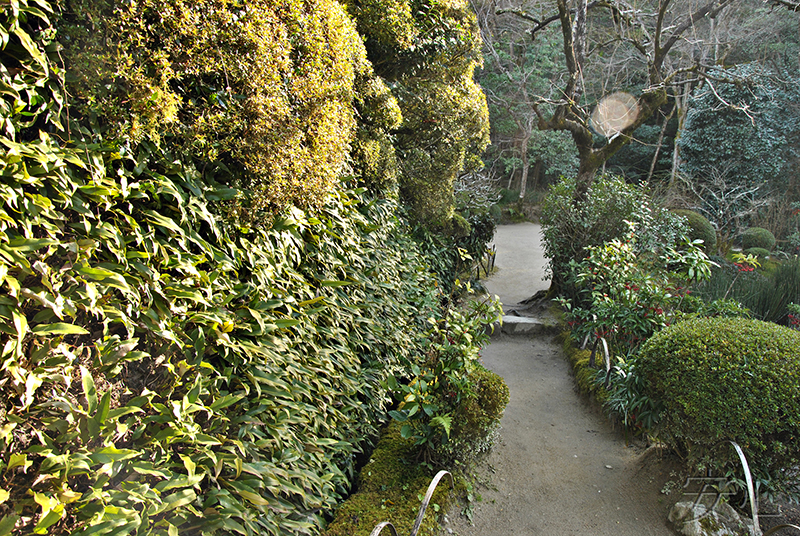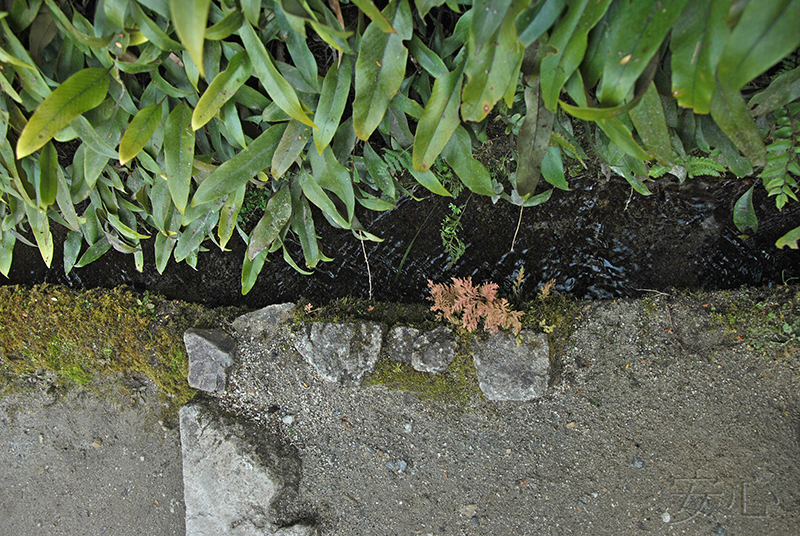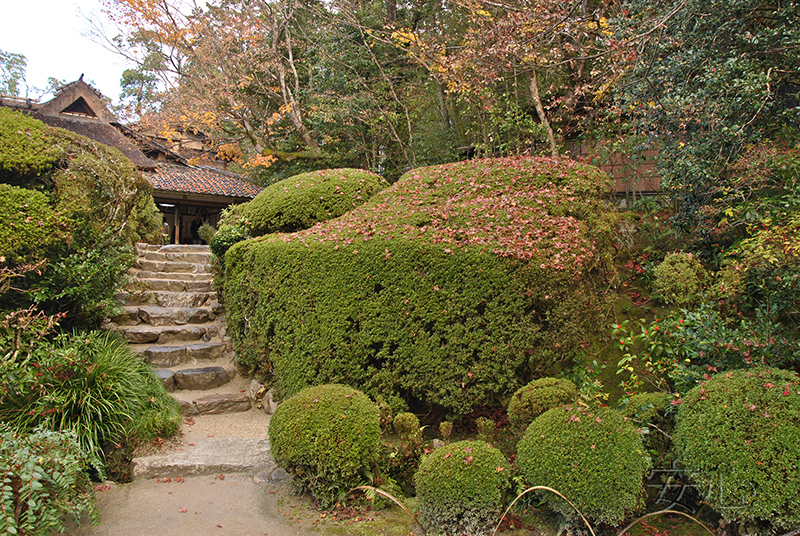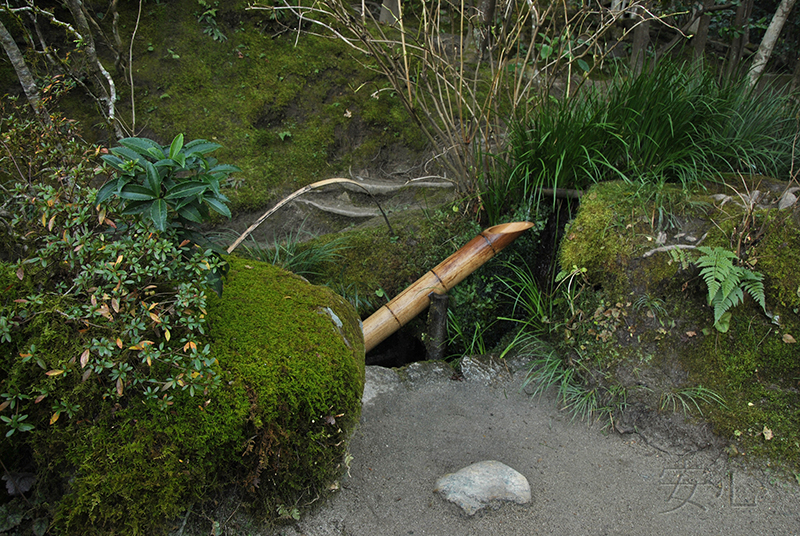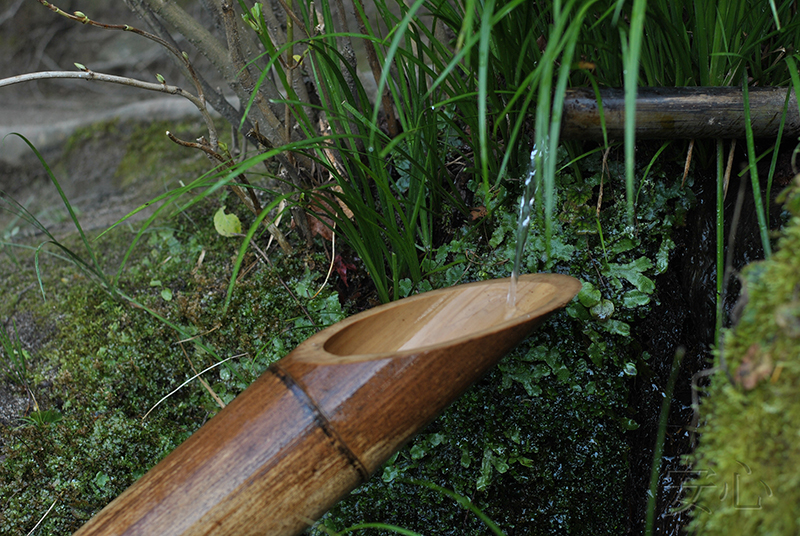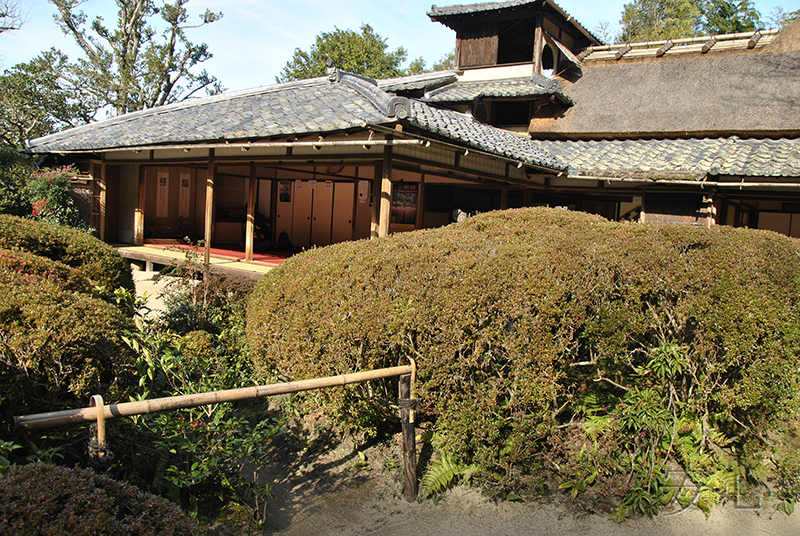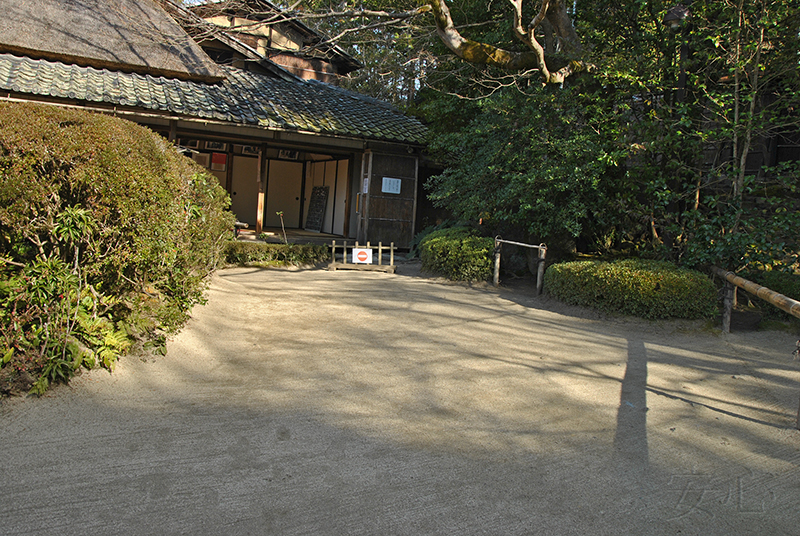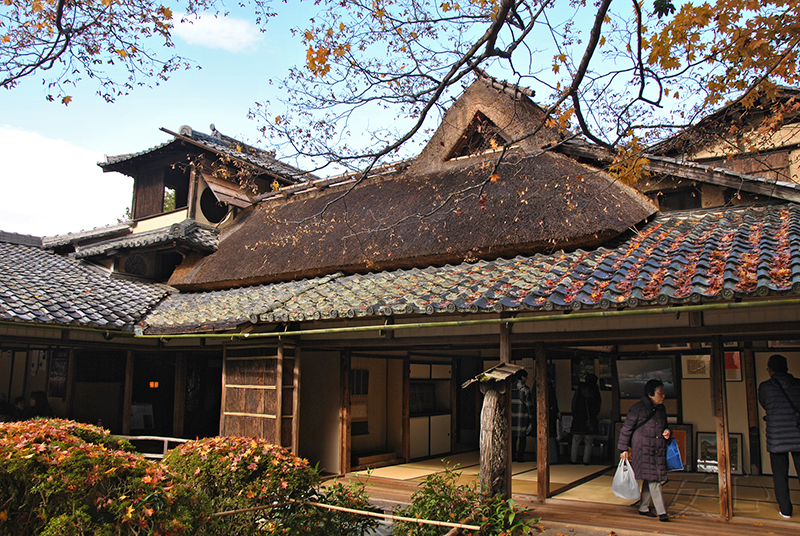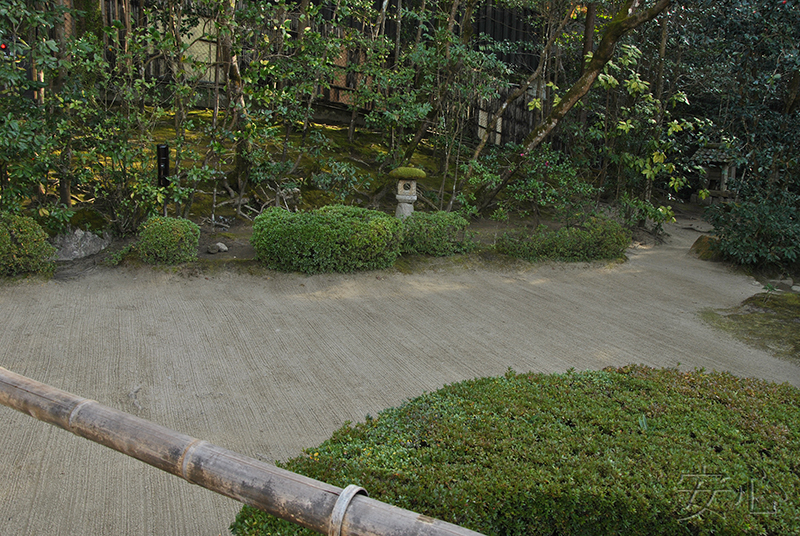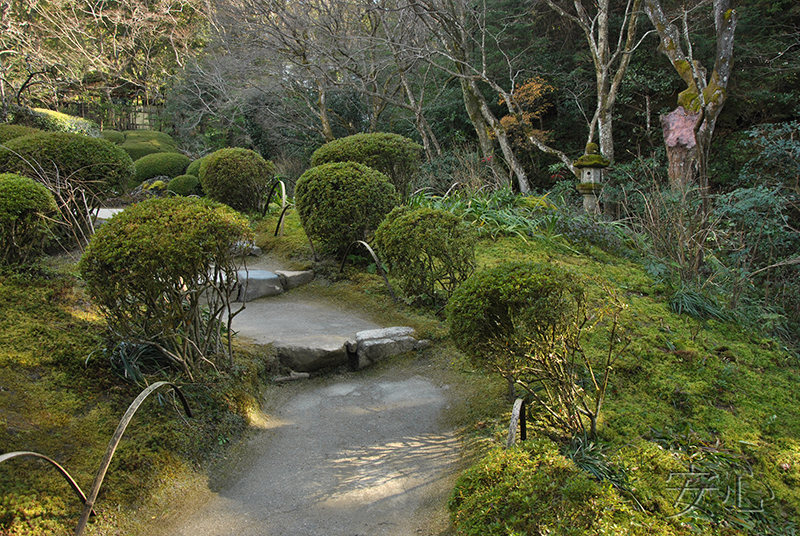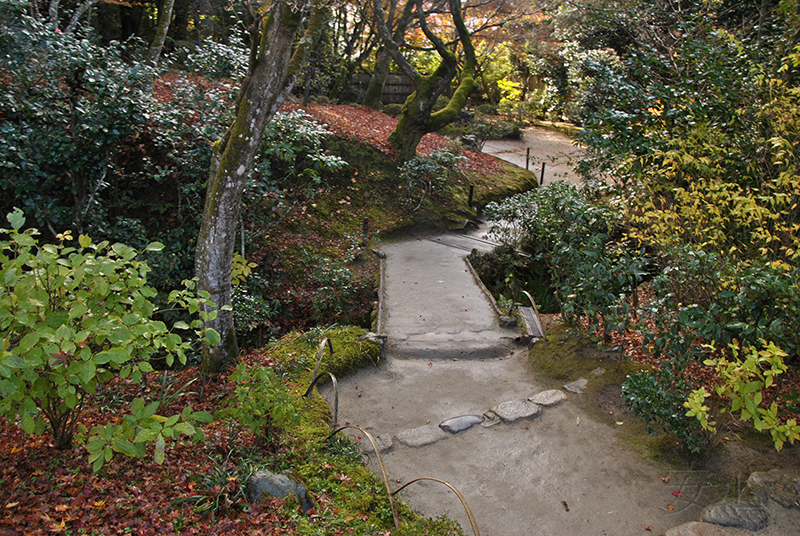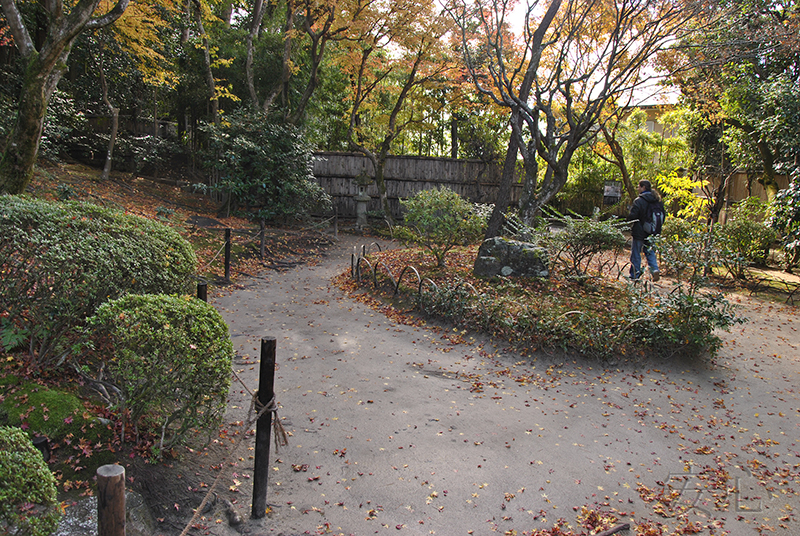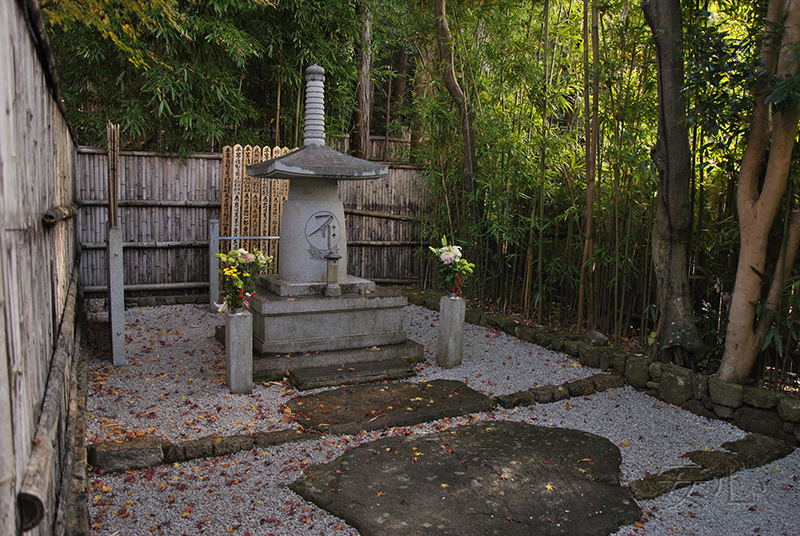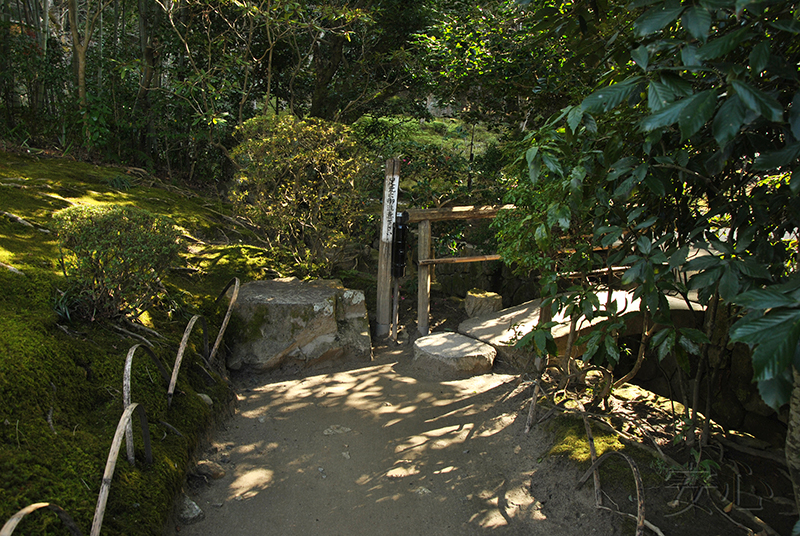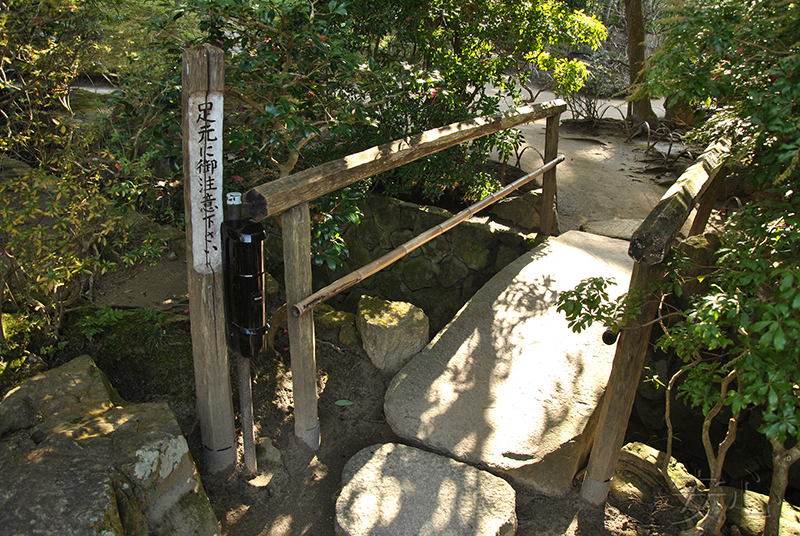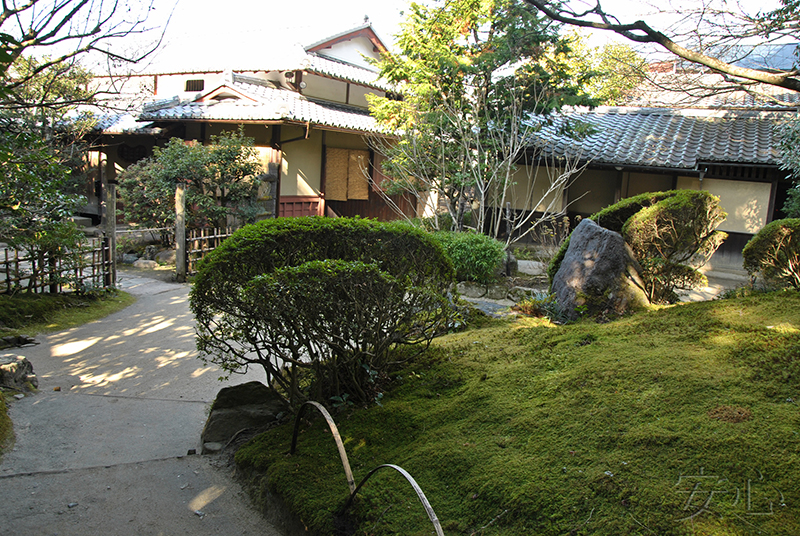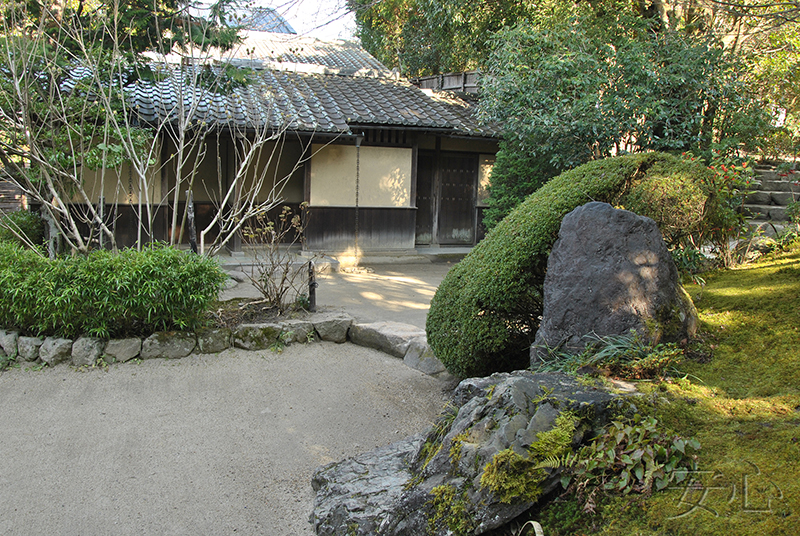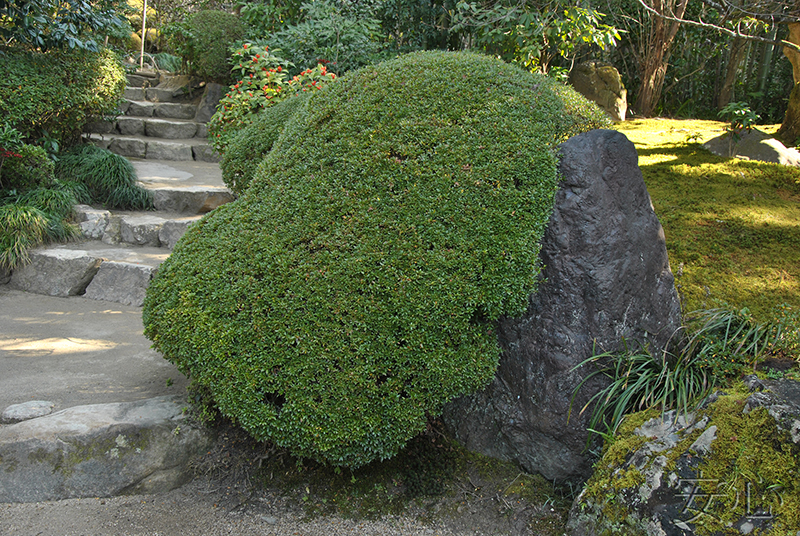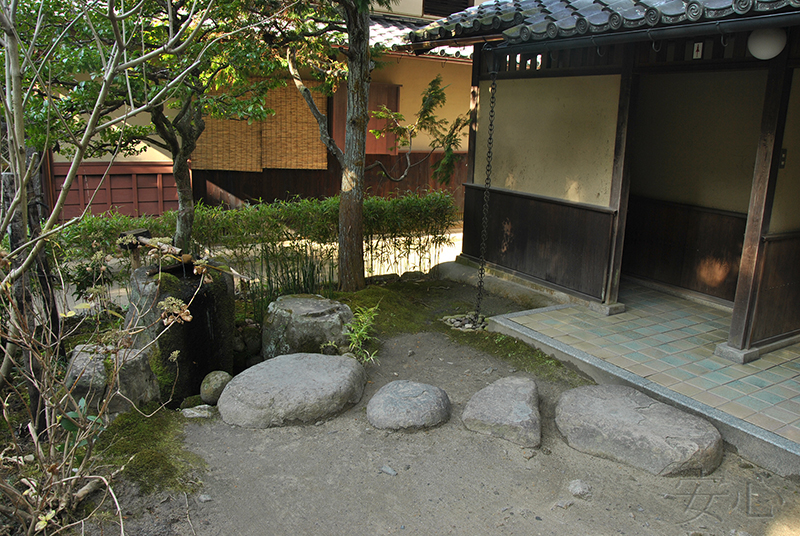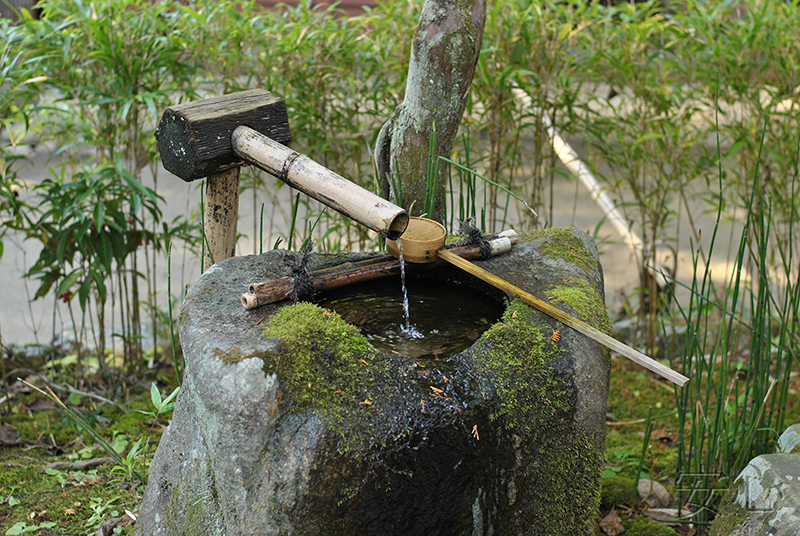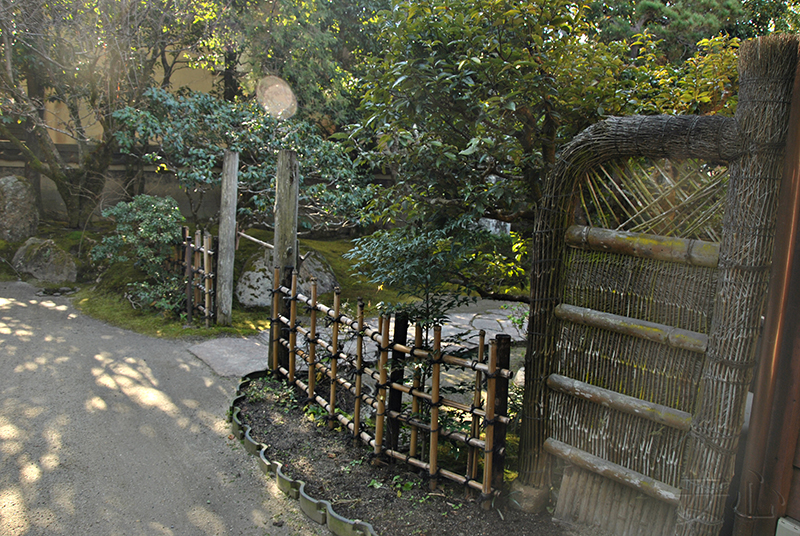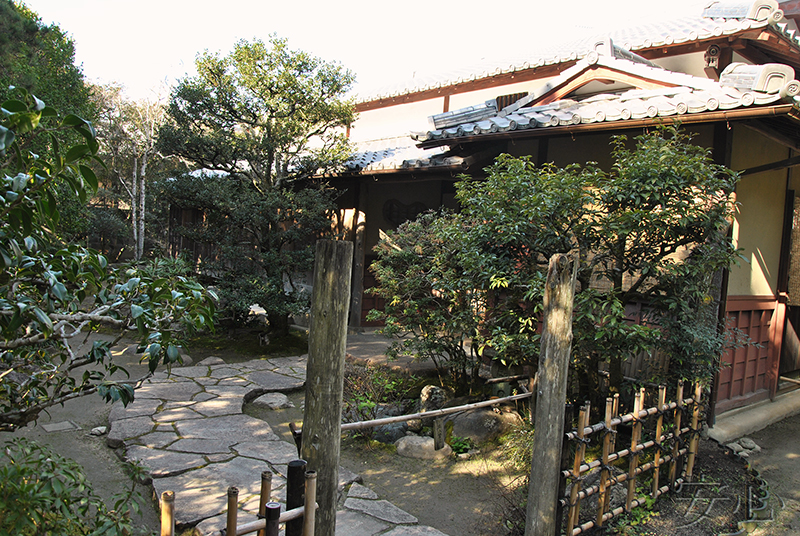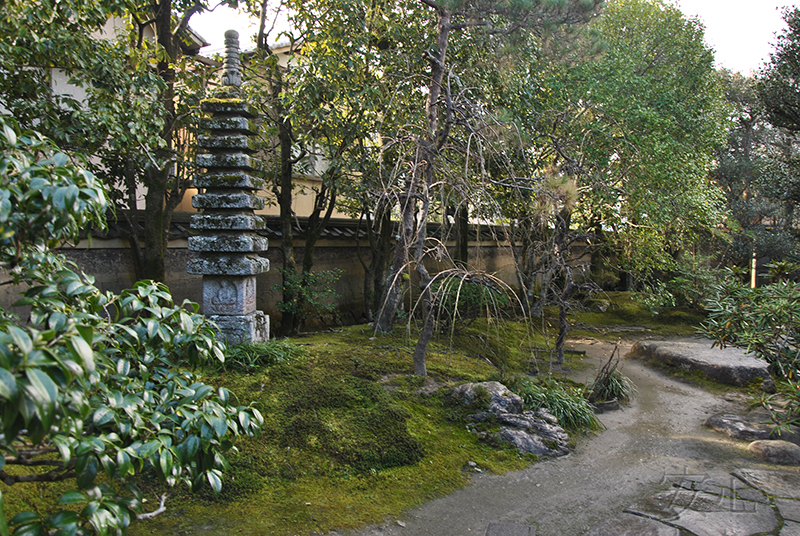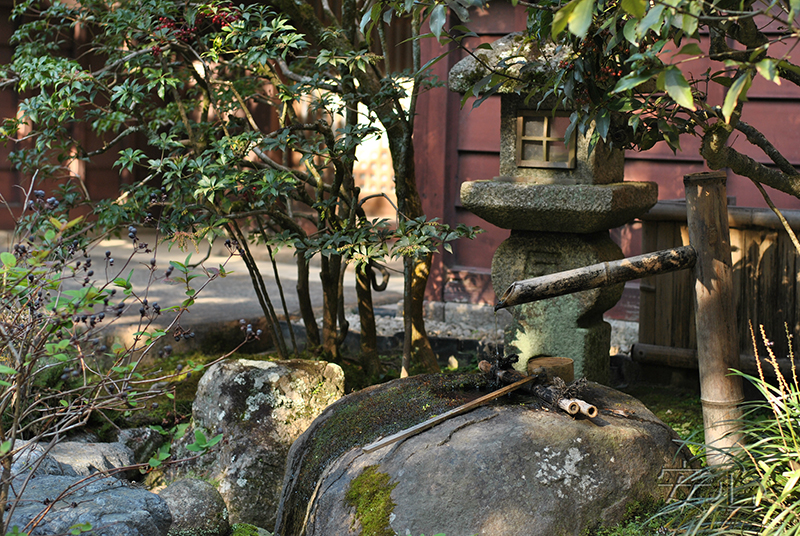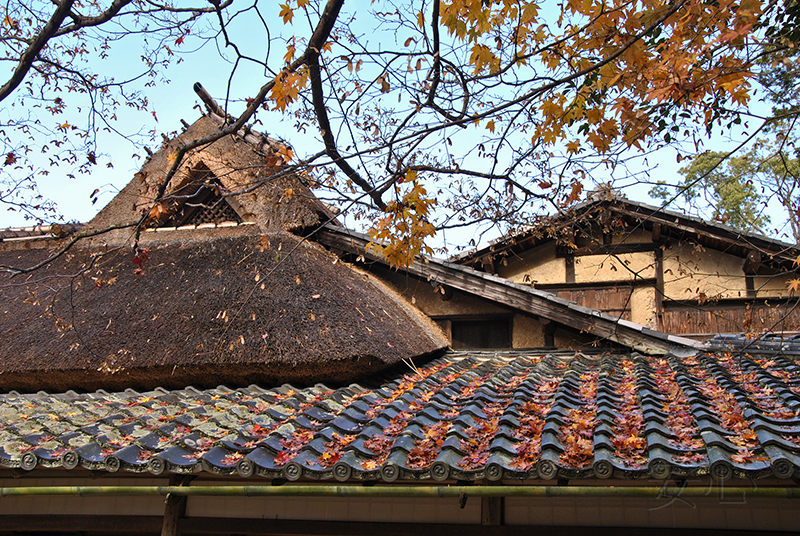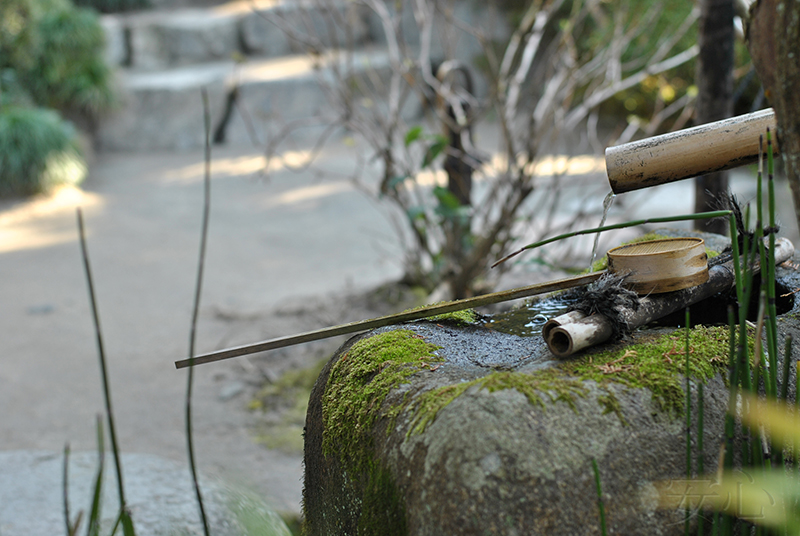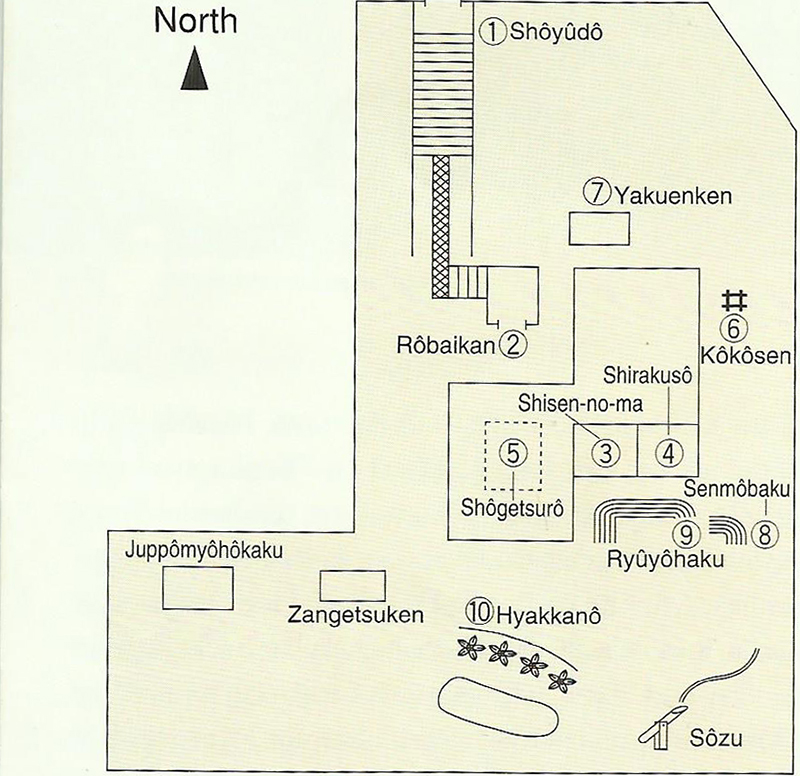
Shisen-do Garden in Kyoto
The Shisen-do Garden (the official name is Outotsu-ka, "a dwelling built on uneven ground"), like Jiko-in, belongs to the Hermitage gardens. This retreat was built by Takeyama Ishikawa (another name is Jozan Ishikawa), a former samurai, scholar of Chinese classics and landscape architect. It was the year 1641 when he was fifty-nine years old that he built the Shisen-do, his hermitage. Until the end of his life, Jozan Ishikawa remained single and continued to study Chinese poetry and calligraphy. He also pioneered the introduction of Sencha tea culture in Japan.
The name Shisen-do (Poets' Shelter) was given in association with the portraits of thirty-six classical Chinese poets, he had selected and displayed in his main room.
To be honest, it was very interesting to compare Shisen-do with Jiko-in. And the first thing that catches your eye is the long approach in both gardens, which occupies almost half of the entire territory.
In Shisen-do, the path starts from the outer Shoyudo gate.
We rise up the stone steps and find ourselves inside a long shady corridor, fenced on both sides by a bamboo fence.
At the end of the path are two ways, to the right or to the left, but a sign with a red arrow shows the correct direction.
At the top we saw the inner gate (Robaikan). They reminded me of Ibaraki-mon, the inner gate of Jiko-in. The roof looks similar, and both of them are very massive.
The garden is visible through the open doors.
But the path leading directly to the building was blocked. Therefore, we had to go around, on perfectly combed sand. The sand is so dense that you can hardly see any traces of visitors.
Here is the office where we bought entrance tickets (the price is 500 yen).
From here you can see the entire entrance.
The territory of the main garden, as well as the entrance zone, is covered with light sand. Along the perimeter it is framed with azaleas. This is a picture of a mountain range in China. This garden was created by Ishikawa himself.
To the right, under a bush of nandina, we found a small stone bowl of a rather unusual shape.
Although we were not alone here, as in Jiko-in, there were still very few people, only two persones. A man who painted or wrote something and a girl. True, on our second visit to Shisen-do we were not so lucky ))
Adjacent to the main room is the study room (Shirakuso). Nearby, also to the right, there is a tall chozubachi.
Azaleas partially cross over to this side of the garden. It can be seen that at the end of the site there is either a passage or a staircase, but you cannot go down to the garden from this side, and we left our shoes at the entrance.
A small pagoda is hidden in the bushes.
Below, along a shallow hollow, a stream flows.
He takes water from a waterfall. The sounds of water are clearly audible, but we couldn't find the location immediately. The waterfall is hidden on the left in the bushes.
At the end of the wooden deck is a tsukubai.
It is impossible to look around the corner from the engawa. To find out what is there, I shot the video and made a screenshot. A well is visible in the distance. Apparently, this is an utility area.
The well can be seen from one of the rooms.
It was also interesting to wander around the house, looking in different rooms. An altar is located in one of them.
In another room there is very interesting stove.
After visitors have enjoyed the view of the upper garden and returned to the office, they are invited to put on their shoes and to go to the lower garden. And this is a difference between Shisen-do and Jiko-in. In Jiko-in everything is concentrated around the building and the garden is essentially small courtyards. But Shisen-do has a garden located at a distance from the main building.
Coming out of the inner gate, we saw again the fork and a poster with a red arrow. Now it was necessary to go in the other direction, that is, straight ahead, then to the left. The exit from the garden is to the right.
And again we saw a corridor in front of us. On the left is a stone wall, on the right is a tall bamboo fence.
This time the corridor was not long. The first thing we saw at the end was the wall of a small teahouse.
Behind it begins the garden. The ground was covered with sand.
On the right is that tea house we saw from the road.
Below is a pergola, entwined with wisteria. There are several benches here for those wishing to sit and relax.
Looking back, we found a small pond. The structure with the thatched roof was intended for fish, so that they have a place to hide in hot weather.
We actually found a cluster of koi carps under it.
Streams flow everywhere here, although they are not very noticeable. If this one can still be seen by crossing the bridge.
Some streams are barely visible, and you need to look closely to see them.
And this is the very stairs that we could only guess about, being at the top.
On the right, in the stream, is the sishi-odoshi. The sound of bamboo hitting a stone can be heard well throughout the garden, including the one above. But you can see it only here.
We climbed the stairs and found ourselves on a sandy area in front of the study room. From here both rooms could be clearly seen.
The first visit to Shisen-do was at the end of December, when the maples leaves had already falled and removed. The garden was clean, and there were almost no people. The second time was in November, at the peak of red maples. Their leaves lay on the roof, painting it and drawing attention to it. And only then I noted the turret from where the owner of the house admired the moon.
Another path went deep to the forest.
Having returned back to the middle garden, we decided to go further and explore the lower garden. To do this, we had to go down the picturesque stairs.
We crossed the river by the bridge.
In the distance was a bamboo fence.
Coming closer, we saw a certain memorial complex.
Returning back to the river, we found that there was another bridge aside, made of a huge stone and fenced with a railing.
After passing it, we saw a small courtyard. There were two buildings here.
The one on the right was a toilet. Very beautiful surrounding area!
I especially liked this stone!
There is even a tsukubai here.
On the left, behind a bamboo fence, there is a tea house.
Unfortunately, the passage was closed, and it was possible to admire the garden only from this place.
And here we also found a little tsukubai.
Despite the fact that I set myself the task of comparing the two gardens, while being in Shisen-do, I completely forgot about everything. The garden is so absorbing, evokes such emotions that it is difficult to analyze something at this time. Only afterwards, after returning home and looking at the photographs, I tried to find commonalities and differences in these two gardens.
Undoubtedly, the long approaches to the destination make these gardens similar. Also in one, and in the other, the main emphasis is on the use of clipped plants. Moving from darkness to light, viewing a light garden from a dark room is a characteristic feature of both gardens. However, Shisen-do places great emphasis on auditory perception. Sitting on the floor, we can not only see the beautiful garden, but also hear the sounds of pouring water, as well as bamboo strikes. In addition, as I mentioned earlier, Shisen-do has a large garden that is located away from the main building.
However, if someone ask me which of these two gardens I liked more, I would find it difficult to answer. Both gardens are beautiful, both evoke strong emotions, and I would love to come back to both of them, and more than once. The only thing, in Jiko-in we were lucky to be the only visitors, and the garden worker paid us a lot of attention, so it was perceived more and more sharply and brighter. But this in no way suggests that one of the gardens is better or worse. Both are perfect!
Garden Information:
Address: 27 monguchi-cho, Ichijo-ji, Sakyo-ku, Kyoto city, 606-8154
Opening hours: from 9 a.m. to 5.00 p.m. (entrance until 16.00)
anshin©2011All rights reserved. When using the materials of the site, reference is obligatory.
Proposals for co-operation, as well as comments and suggestions on the site please send to the address: anshinsad@gmail.comtel: +7 (965) 121-80-60, 10am-20pm
